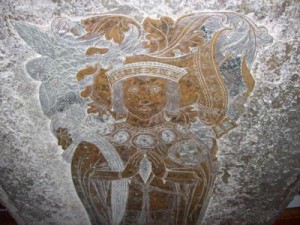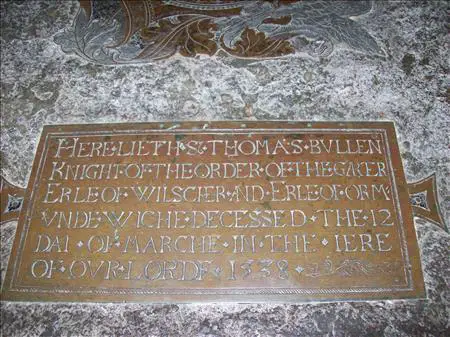 On this day in history, 12th March 1539, Anne Boleyn’s father, Thomas Boleyn, Earl of Wiltshire and Ormond, died at Hever Castle, the Boleyn family home. He was about sixty-two years of age. His servant, Robert Cranwell, wrote to Thomas Cromwell of Thomas’s death:
On this day in history, 12th March 1539, Anne Boleyn’s father, Thomas Boleyn, Earl of Wiltshire and Ormond, died at Hever Castle, the Boleyn family home. He was about sixty-two years of age. His servant, Robert Cranwell, wrote to Thomas Cromwell of Thomas’s death:
“My good lord and master is dead. He made the end of a good Christian man. Hever, 13 March.”1
John Husee recorded in a letter to Lord Lisle that King Henry VIII ordered masses to be said for the soul of his former father-in-law who had served him as a diplomat, Comptroller of the Household and Treasurer of the Household.2 Thomas had fallen from royal favour following the falls and executions of two of his children, Queen Anne Boleyn and George Boleyn, Lord Rochford, losing his office of Lord Privy Seal to Thomas Cromwell in the summer of 1536. However, he had managed to regain the king’s favour by helping to put down the Pilgrimage of Grace rebellion in late 1536. It had even been rumoured, following the death of his wife, Elizabeth, in 1538, that he would marry the king’s niece, Lady Margaret Douglas3
Thomas was laid to rest at the family church, St Peter’s, Hever, which is situated on the green just outside Hever Castle. His tomb is topped by a beautiful brass memorial depicting Thomas dressed as a Knight of the Garter (he’d been invested in 1523). Above his right shoulder sits his daughter Anne’s falcon crest and at his feet, there is a griffin. The inscription reads:
“Here lieth Sir Thomas Bullen, Knight of the Order of the Garter, Erle of Wilscher and Erle or Ormunde, which decessed the 12th dai of Marche in the iere of our Lorde 1538.”

Note: Thomas Boleyn died before Lady Day, 25th March, the start of the Tudor calendar year, so that is why he is recorded as dying in 1538.
The spelling “Bullen” is a variation of Boleyn. There was no standardised spelling in Tudor times and you can read more about the various spellings of Boleyn in my article Boleyn or Bullen – The Spelling of Boleyn and the Myth that Anne Boleyn Changed It.
Thomas Boleyn was a gifted man, a Renaissance man, a loyal royal servant and a man who had an amazing career. You can read more about him in the following articles:
and in our Thomas Boleyn category.
Notes and Sources
Photos: copyright Tim and Claire Ridgway 2010.
- Letters and Papers, Foreign and Domestic, Henry VIII, XIV Part 1, 511.
- LP xiv. 950.
- LP xiii. Part 1. 1419.